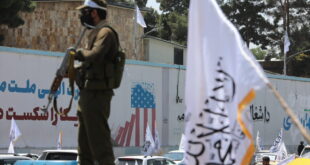The decision by India and Pakistan to ‘cease firing along the Line of Control (LoC) and all other sectors’, with effect from the midnight of February 25, 2021, is being seen as an important thaw in the bilateral relationship that was at an all-time low.1 The decision came about after talks between the Director Generals of Military Operations (DGMO’s) of both countries. This joint statement is the first such understanding between India and Pakistan in nearly two decades, after the 2003 ceasefire agreement.
In 2019, during the Indian general elections, Pakistan Prime Minister Imran Khan Niazi had famously said that there was a “better chance of peace talks with India” if Prime Minister Narendra Modi was voted back to power.2 PM Modi had earlier made a surprise stop over at Lahore in 2015 to attend the wedding of the grand-daughter of the then Prime Minister and PML-N Chief, Nawaz Sharif.3
While these were two bright spots, 2016 witnessed a downward spiral in bilateral relations with terror strikes at Pathankot and Uri, followed by a surgical strike by India in September 2016. The February 2019 Pulwama attack worsened the relations further. India retaliated by launching aerial attacks on campsites in Balakot on February 24.
The conflict escalated further in 2019 with the abrogation of Article 370 and 35A on August 5, 2019 and re-organisation of the state of Jammu and Kashmir into two Union Territories. Political, commercial, cultural and sporting ties were snapped and cross LoC movements were completely stopped. The High Commissioners from both countries were re-called. Imran Khan had asserted that until Article 370 was restored to its original form, there was no chance of any political dialogue with the Indian government.
Pakistan upped the ante across the LoC and ceasefire violations escalated manifold. Reports noted that the number of violations in September 2019 was nearly three times that in the previous years for the same month.4 In 2020, the number of ceasefire violations along the LoC were over 5,000, with 46 fatalities. This was the highest number of ceasefire violations since 2003.5
The Imran Khan government also invested its energy and time in highlighting alleged Indian atrocities in Kashmir at national and international forums. Khan even demanded a meeting of the Organisation of Islamic Cooperation (OIC) Foreign Ministers to discuss Kashmir, which was not supported by Saudi Arabia.6 The Pakistan government moreover submitted anti-India dossiers at the UN.
However, from the start of 2021, Pakistan has exhibited signs of being open to measures to reduce tensions. Chief of Army Staff (COAS) General Qamar Javed Bajwa, at the passing-out ceremony of the Pakistan Air Force (PAF) cadets on February 2, stated that it was “time to extend the hand of peace in all directions”.7 He added that India and Pakistan should resolve the Kashmir issue in a dignified manner.
Pakistan also accepted the invitation by India to attend the Health Secretary-level South Asian Association of Regional Cooperation (SAARC) virtual meeting-cum-workshop on February 18, 2021 to discuss the ongoing Covid-19 crisis. This virtual meeting was addressed by PM Modi.
At the virtual conference of SAARC Heads of State held earlier on March 15, 2020, PM Modi had proposed a regional Coronavirus Emergency Fund to mitigate the risks associated with the pandemic in the South Asian region, with India pledging an initial contribution of US$10 million.8 At that time, the proposal received extensive support from the SAARC members, except Pakistan.
Meanwhile, India also allowed the use of its air space to Imran Khan’s aircraft on his February 2021 trip to Sri Lanka. During this trip, Khan stated that the Kashmir dispute can only be resolved through dialogue.9 The Chief of Army Staff Gen. M.M. Naravane, a day before the ceasefire agreement, while addressing a webinar, was cited as stating that “unsettled borders and violence on the borders help no one” and that continued engagement with Pakistan could result in an understanding on the border.
Even as the ceasefire agreement has been welcomed by analysts, there was speculation that an exchange of views between National Security Advisor, Ajit Doval, and Special Assistant to the Pakistan PM, Moeed Yusuf had played a part in the development. Yusuf, in a series of tweets on February 25, rejected this claim and stated that the decision came about only as a result of the talks between the two DGMOs. Earlier in October 2020, Yusuf had stated that India had expressed an interest in dialogue.10 This was denied by the Ministry of External Affairs.11
The ceasefire decision marks the softening of stances on both sides, which has renewed hopes of a new beginning. There are talks of the revival of the SAARC Summit meeting, cancelled in 2016 when it was supposed to take place in Islamabad. Speculations are rife that PM Modi will participate in it as and when Pakistan hosts the summit. There is a hope that as a follow-up to the DGMO’s hotline talk, the High Commissioners will be reinstated on both sides, which may open up possibilities of a restart of trade and travel.
While there are optimists on both sides, many in Pakistan are questioning the Khan government’s decision to agree to the ceasefire. Imran Khan himself has placed the onus on India to keep the LoC peaceful. Some analysts argue whether it is wise on the part of the government and the army to talk peace with India, without resolution of the Kashmir issue. There are those who insist that India agreed to the ceasefire keeping its own self-interest in mind, and was a tactic to possibly avoid a two-front war.12
Be that as it may, with the ceasefire in effect, it will certainly help India and Pakistan diffuse tensions along the LoC. India on it part has affirmed that there would not be any let-up in its counter-terrorism efforts. It is time perhaps to take additional, incremental steps, towards peace and reconciliation. These could include re-starting cross-LoC trade and connectivity, which could create the right environment for fruitful dialogue to resolve outstanding issues between the two South Asian neighbours.
 Eurasia Press & News
Eurasia Press & News



